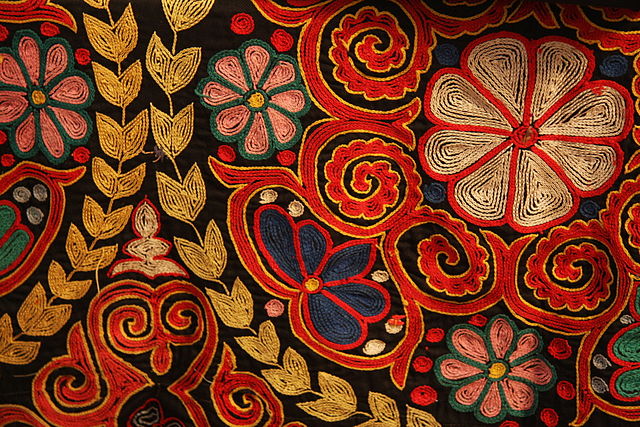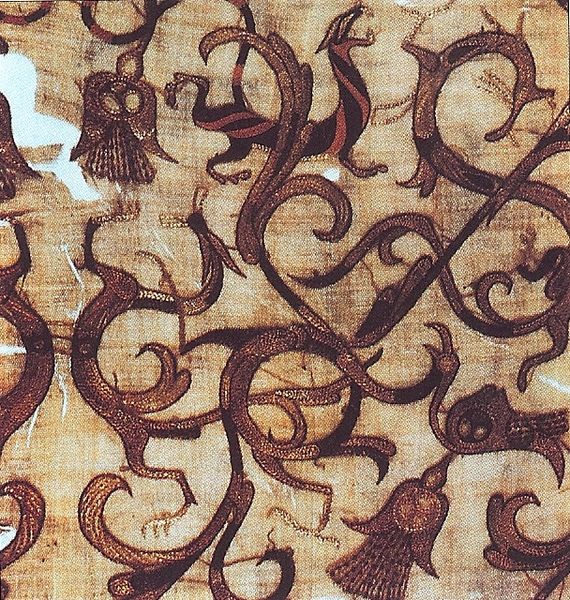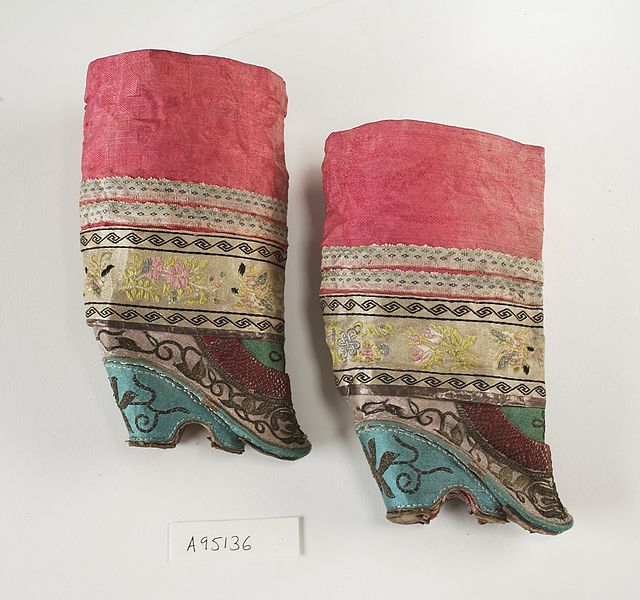Chain stitch is a sewing and embroidery technique in which a series of looped stitches form a chain-like pattern. Chain stitch is an ancient craft – examples of surviving Chinese chain stitch embroidery worked in silk thread have been dated to the Warring States period. Handmade chain stitch embroidery does not require that the needle pass through more than one layer of fabric. For this reason the stitch is an effective surface embellishment near seams on finished fabric. Because chain stitches can form flowing, curved lines, they are used in many surface embroidery styles that mimic "drawing" in thread.
Traditional embroidery in chain stitch on a Kazakh rug, contemporary
Detail of an embroidered silk gauze ritual garment from a 4th-century BC, Zhou era tomb at Mashan, Hubei province, China. Rows of even, round chain-stitches are used both for outline and to fill in color.
Machine embroidery in chain stitch on a voile curtain, China, early 21st century
Open chain stitch from Kalotaszeg, early 20th century
Embroidery is the art of decorating fabric or other materials using a needle to stitch thread or yarn. Embroidery may also incorporate other materials such as pearls, beads, quills, and sequins. In modern days, embroidery is usually seen on hats, clothing, blankets, and handbags. Embroidery is available in a wide variety of thread or yarn colour. It is often used to personalize gifts or clothing items.
Embroidery sampler by Alice Maywood, 1826
Laid threads, a surface technique in wool on linen. The Bayeux Tapestry, 11th century
Detail of embroidered silk gauze ritual garment. Rows of even, round chain stitch used for outline and color. 4th century BC, Zhou tomb at Mashan, Hubei, China.
A pair of Chinese shoes for bound 'lily' feet







